So you’re thinking of hopping on the saddle, but you have no experience whatsoever. Maybe you rode a pony as a kiddo, but never a fully grown horse. In all honesty, it’s like riding a bike: once you learn, you never forget. Granted, this bike is not only much bigger, but is also alive, but you get the gist.
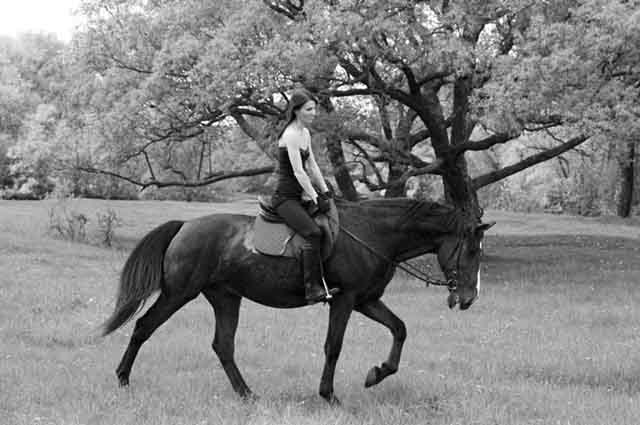
So what is there to know about riding a horse? Quite a bit, actually, but we’ll slim it down for you so you know the basics on how to get on the saddle and enjoy a ride through the fields.
Safety
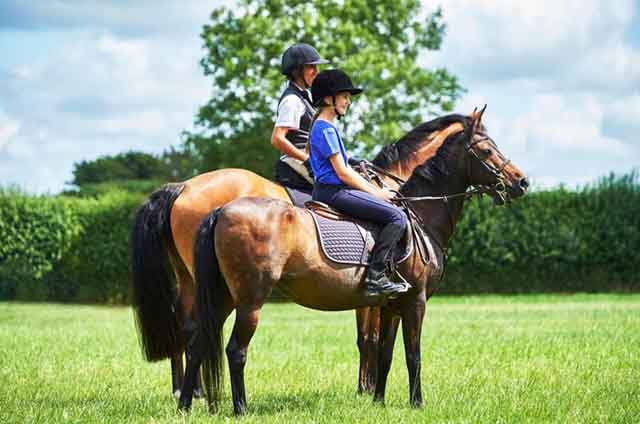
Like all methods of self-transportation, whether it be bike, motorcycle, skateboard, or horse, you’re going to want to think of safety. After all, horses aren’t small. Even the most well-trained horse can throw you through a loop and have you fall off and injure yourself. Here are some basic safety tips.
- Stay alert. Like I said, even the most tame of horses can be unpredictable. These are living, breathing, thinking, and feeling animals. Especially if you’re not familiar with horses, their behavior, and what is and what isn’t typical for them, you should make sure you’re constantly aware of yourself, your horse, the environment, and other horses around you. A crack of thunder can have you thrown to the ground, so always be alert and aware.
- You need to wear a helmet. Not “you can wear a helmet”, or “you should wear a helmet”, but you need to wear a helmet. Flat out, no negotiation. Horses are big, and it so happens that you’re thrown off, a helmet can be the difference between life or death. It just takes a single fall to ruin things forever. Bottom line: wear a helmet.
- Wear proper boots. This is important if you want to become a routine rider. You won’t have to buy some if this is a one-off thing, but if this is going to be a regular thing, you’re going to want to don the appropriate footwear to protect your toes. You can find boots fit for horseback riding online. Not only should they be the durable type to handle all the dirt, but also be able to protect your toes in case a 1,700 lbs horse steps on your foot.
Mounting a Horse
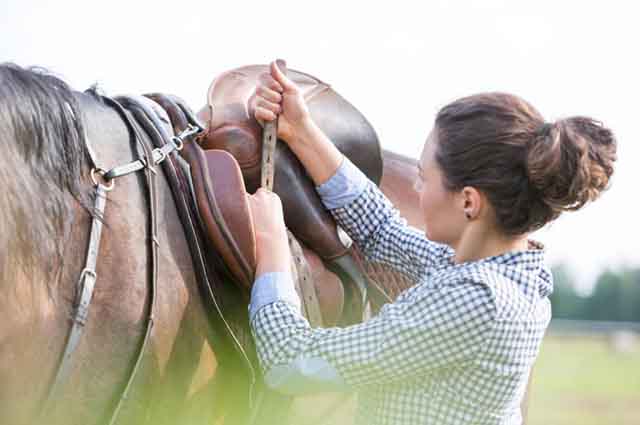
Here’s the meat of the matter. Here’s how to properly mount a horse.
- Have another person hold the horse steady.
- Stand on the horse’s left side, holding the end of the reins in your left hand, loose but just in front of the saddle.
- Place your left foot in the stirrup, making sure the ball of your foot is inside rather than just your toe or heel. Put your weight on the stirrup and step up into a standing position. (not to be rude, but maybe it’s time to check some of our guides on weight loss, using black pepper here and using damiana here.)
- Swing your right leg over the horse’s flank. Try not to kick the horse or else you may be thrown off.
- Sit gently on the saddle. Don’t throw yourself on.
- Have you or an assistant adjust the stirrups to the proper length. Place your right foot in the right stirrup, once again putting it around the ball of your foot.
- Congrats! You’ve now successfully mounted a horse! Be sure you’re with someone every time you mount a horse until you eventually get comfortable enough to do it on your own.
Walking on a Horse
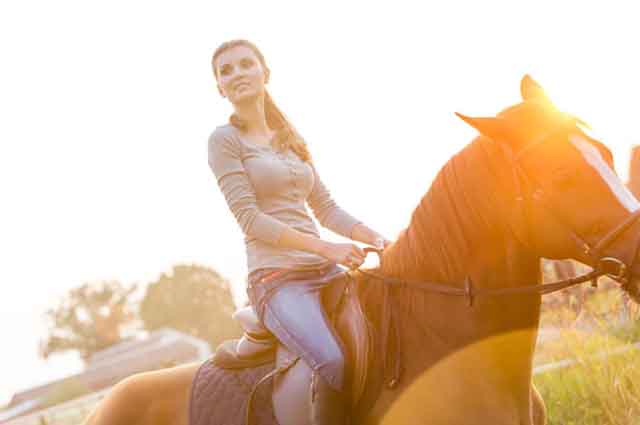
You’ve got the mounting down, now you just have to get the horse to move. One thing to keep in mind is that you need to be gentle with horses. Don’t snap the reins and go “Giddy-up!” when having a horse walk with you. You need to be respectful and gentle.
So, here’s how to walk on a horse.
- Make sure your feet are placed in both stirrups, focusing on the balls of your feet, holding the reins in your hands and keeping it loose. If it’s too taut, it will pull at the horse’s mouth, something that they don’t quite enjoy. Make sure you’re relaxed in the saddle.
- Using your lower legs, give your horse a gentle squeeze. This should give the horse the signal to start walking. If your horse doesn’t move, it might be because they’re simply quiet or lazy. Give them a few bumps with your heels. Do not kick the horse.
- Keep your back straight and keep looking between the horse’s ears. Do not squeeze repeatedly unless the horse has stopped walking for whatever reason.
- Look to your instructor on learning how to steer with the reins and your legs. It’s not really something that can be taught over a website.
- Congrats! You’ve now walked on a horse!
How to Stop a Horse
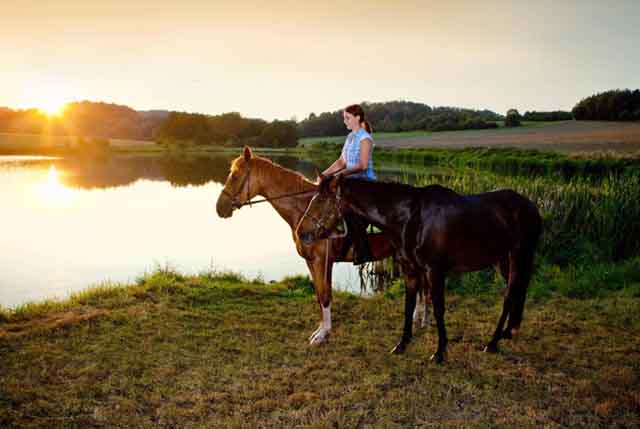
You’ve learned to mount and walk on a horse, so now it’s time to stop a horse. The last thing you want is to realize you can’t get the horse to stop. So, here’s the step-by-step.
- Make sure you are firmly in your saddle, your weight sunk into the seat. Lean back a bit. If you need to hold onto the horn of the saddle, that’s alright. There’s no shame in doing so.
- Say “whoa” in a normal tone of voice. Loudly enough for them to hear it, but gentle enough so you’re not yelling at the horse.
- Pull gently on the reins. Tighten and release it several times, but don’t go too harsh. A horse’s mouth, where the reins are attached to, is very sensitive, so do not yank. Just gently tug and release until the horse slowly comes to a stop, occasionally saying “whoa”.
- Once the horse has stopped, you can release the reins.
- Give the horse’s neck as a pat. Yes, this is required, even if things didn’t go completely smoothly, as it rewards the horse for following instructions. It’s a little “good job” for a nice horse.
- Congrats! You’ve successfully stopped a horse! Now just dismount in the same fashion you got on the horse in the first place using the left side. Now you know the basics of riding a horse!

Managing Editor, With a background in health, holistic nutrition and science, Chloe has written for international publications including the Wall Street Journal and Green King.
















